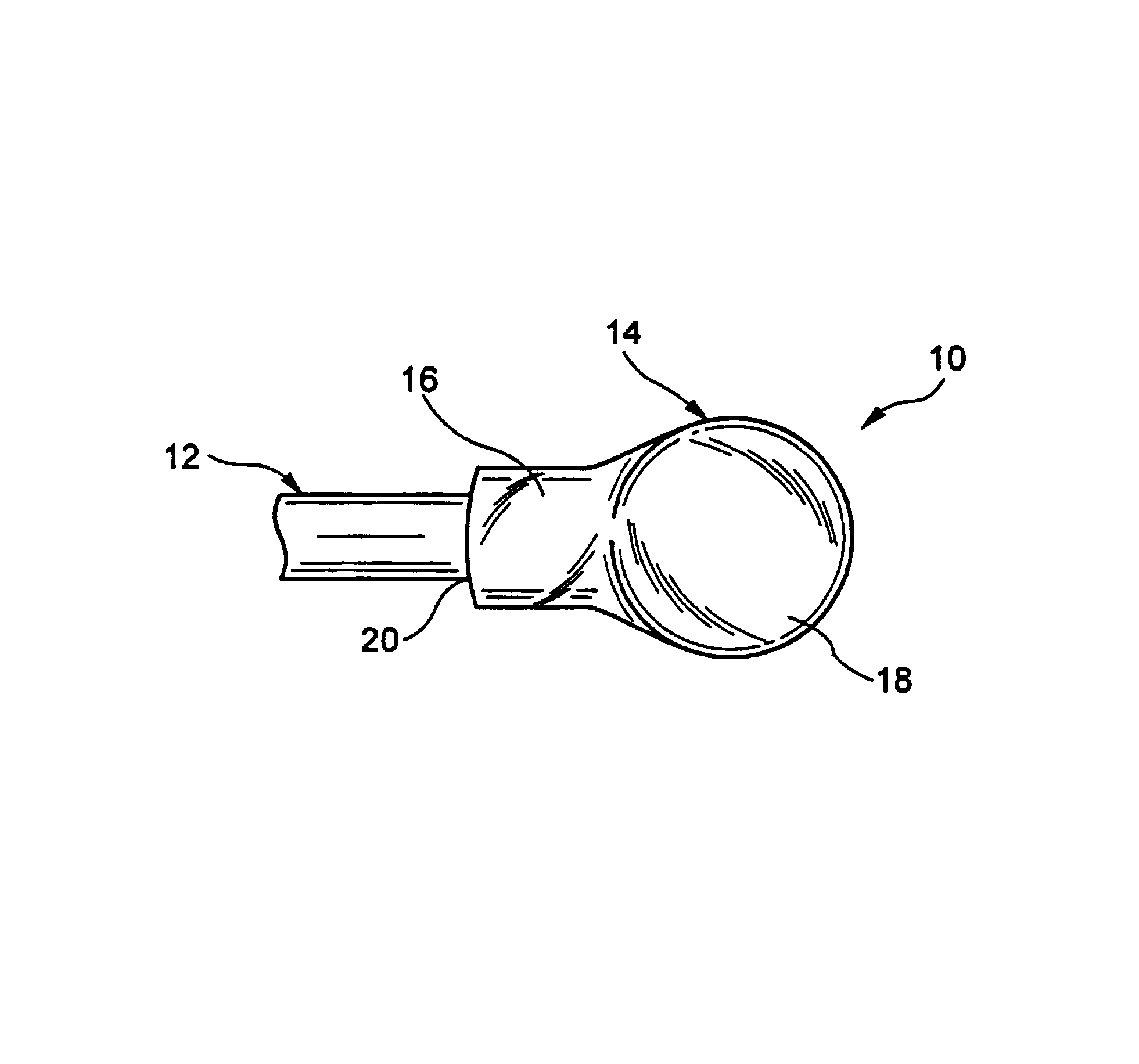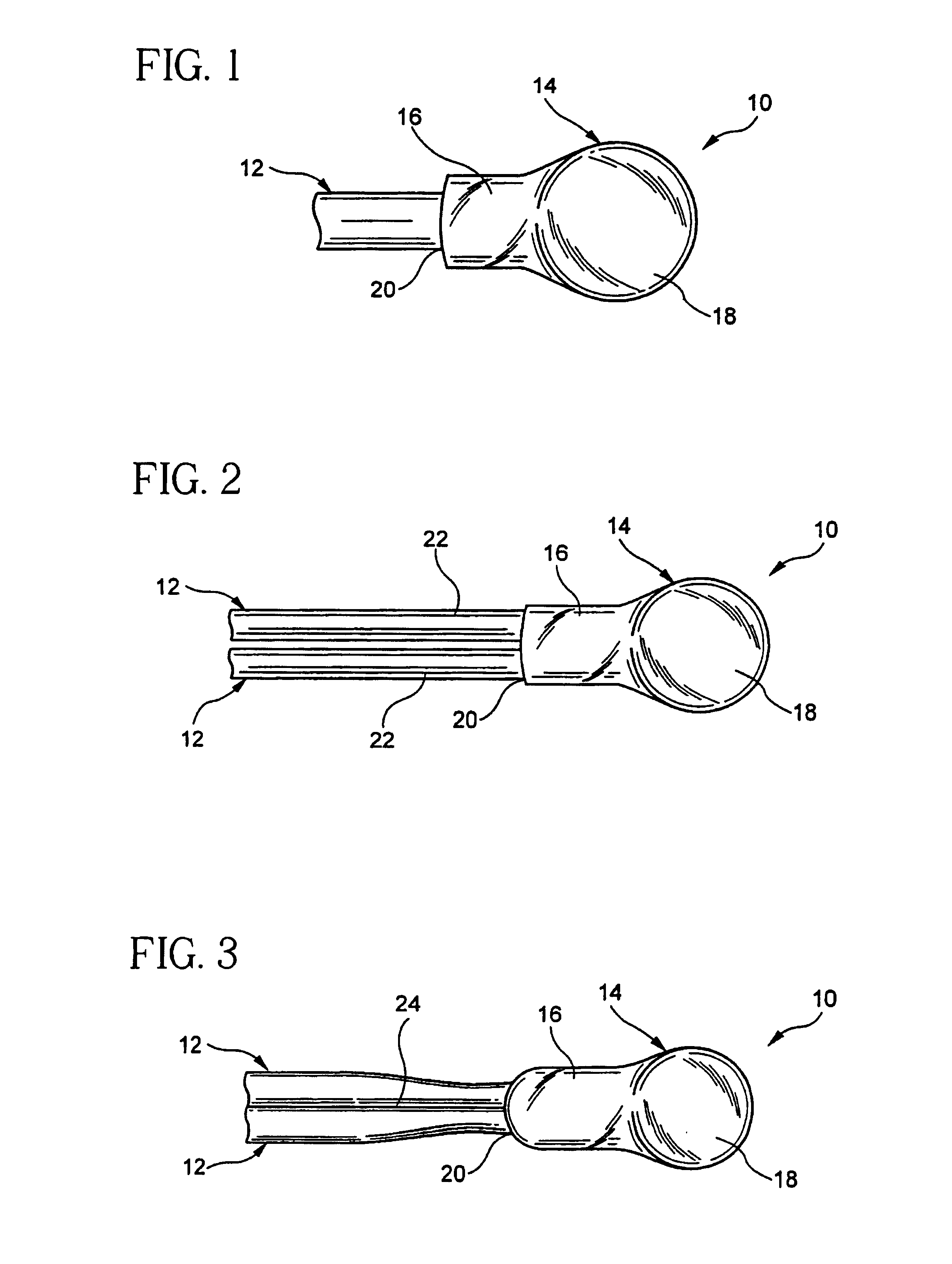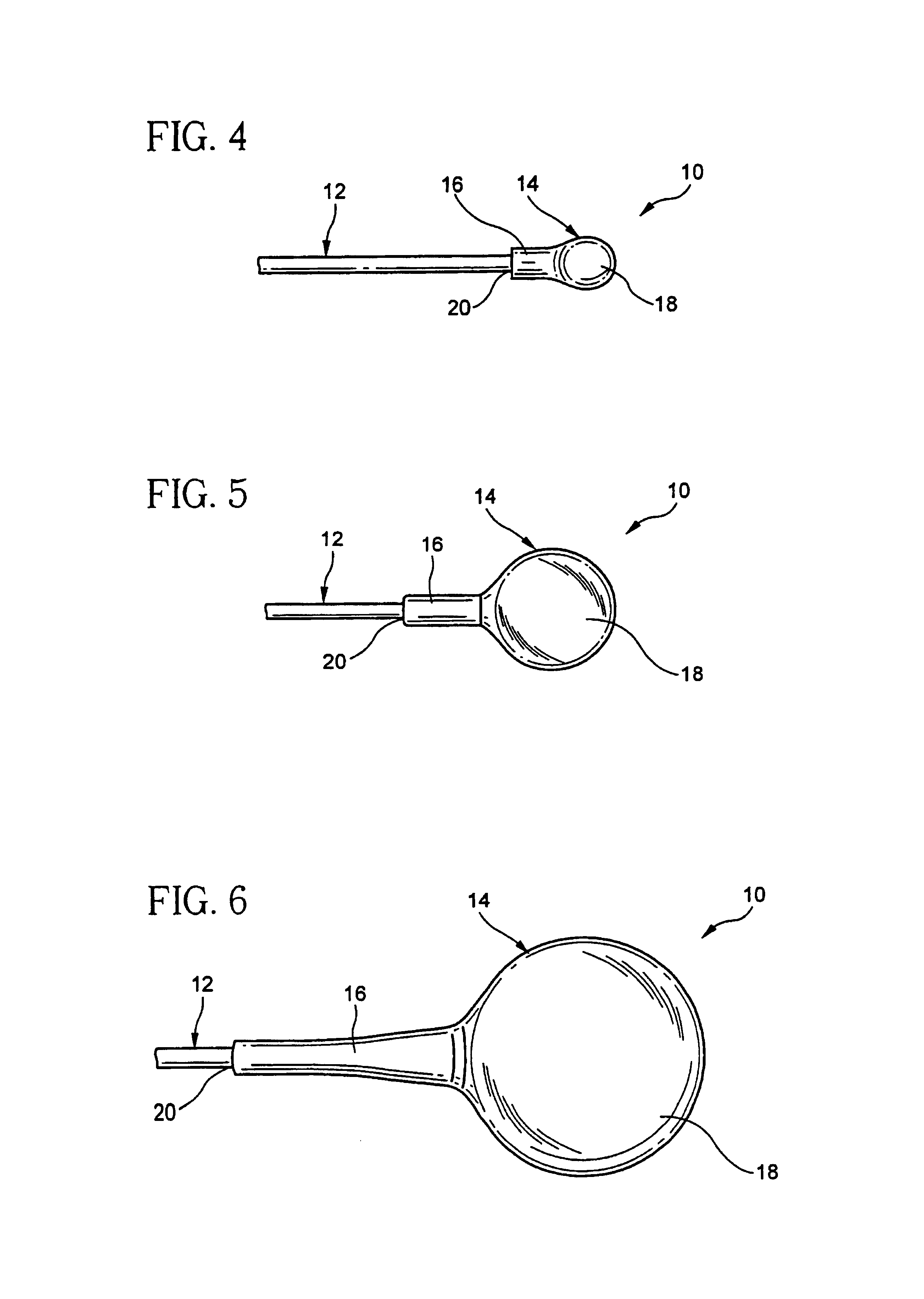Optical waveguide lens and method of fabrication
a technology of optical waveguides and fabrication methods, applied in the field of optical waveguide lenses, can solve the problems of difficult manufacturing and high cost of commercially available grin lenses
- Summary
- Abstract
- Description
- Claims
- Application Information
AI Technical Summary
Benefits of technology
Problems solved by technology
Method used
Image
Examples
Embodiment Construction
[0043]Reference will now be made in detail to the present preferred embodiments of the invention, examples of which are illustrated in the accompanying drawings. Wherever possible, the same reference numbers will be used throughout the drawings to refer to the same or like parts. An exemplary embodiment of the optical waveguide lens of the present invention is shown in FIG. 1, and is designated generally throughout by reference numeral 10.
[0044]In accordance with the invention, referring to FIGS. 1-6 it may be seen that the present invention for an optical waveguide lens 10 includes an optical waveguide 12, a lens member 14 having a throat portion 16 and a generally spherical lens portion 18. The lens member 14 is attached to the optical waveguide 12 at a junction 20 formed by fusion splicing the lens member 14 to the optical waveguide 12 according to the process described further below.
[0045]FIG. 1 depicts an optical waveguide lens 10 in which a conventional optical waveguide 12 (s...
PUM
 Login to View More
Login to View More Abstract
Description
Claims
Application Information
 Login to View More
Login to View More - R&D
- Intellectual Property
- Life Sciences
- Materials
- Tech Scout
- Unparalleled Data Quality
- Higher Quality Content
- 60% Fewer Hallucinations
Browse by: Latest US Patents, China's latest patents, Technical Efficacy Thesaurus, Application Domain, Technology Topic, Popular Technical Reports.
© 2025 PatSnap. All rights reserved.Legal|Privacy policy|Modern Slavery Act Transparency Statement|Sitemap|About US| Contact US: help@patsnap.com



